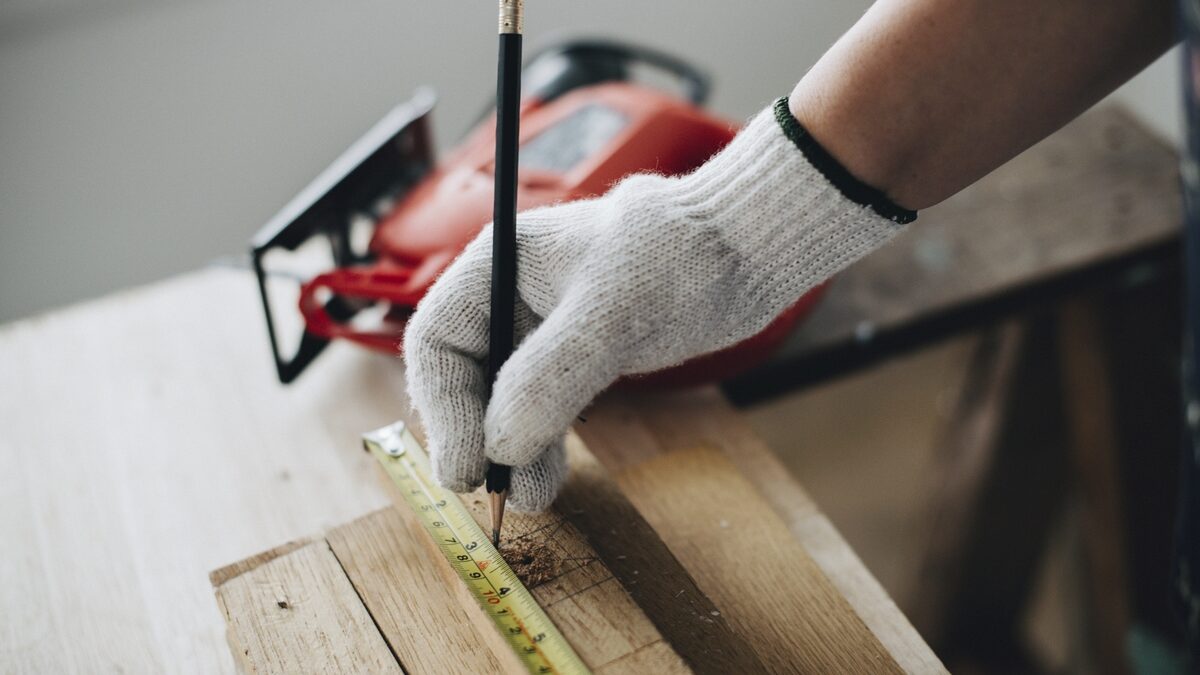DIY Custom Carpentry Tips for Beginners
Custom carpentry is a rewarding and fulfilling hobby that allows you to create unique and personalized woodwork for your home or as gifts for others. Whether you’re interested in building shelves, cabinets, or custom furniture, this article will provide you with essential tips and guidance to get started on your carpentry journey. In this guide, we will cover the necessary tools, safety precautions, basic techniques, planning, building, finishing, troubleshooting, and maintenance for custom carpentry projects. So, grab your toolbox and let’s dive in!
Introduction
Custom carpentry involves creating one-of-a-kind woodwork tailored to your specific needs and preferences. It goes beyond the standard dimensions and designs found in mass-produced furniture and allows you to unleash your creativity. Whether you’re a complete beginner or have some experience with woodworking, these DIY tips will help you develop your skills and confidence.
Essential Tools for Custom Carpentry
Before embarking on any custom carpentry project, it’s crucial to have the right tools at your disposal. Some of the essential tools for beginners include:
- Tape measure
- Carpenter’s square
- Claw hammer
- Chisels
- Hand saw
- Power drill
- Orbital sander
- Clamps
- Safety goggles
- Ear protection
Safety Precautions and Gear
Safety should be a top priority when working with tools and wood. Here are some important safety precautions to follow:
- Always wear protective gear such as safety goggles and ear protection.
- Use clamps or a vise to secure the wood you’re working on.
- Keep your tools sharp and clean for optimal performance.
- Read and understand the user manuals for power tools.
- Work in a well-ventilated area and wear a dust mask when sanding or cutting wood.
Understanding Wood and Materials
To create quality custom carpentry projects, it’s important to understand the different types of wood and their characteristics. Some popular choices for custom woodworking include oak, maple, pine, and cherry. Each type of wood has its own unique grain patterns, density, and durability. Additionally, you’ll need to select appropriate materials such as screws, nails, and adhesives based on the specific project requirements.
Basic Carpentry Techniques
Mastering basic carpentry techniques will lay a solid foundation for your custom carpentry endeavors. Some key techniques to learn include:
- Measuring and marking accurately for precise cuts and joints.
- Cutting and shaping wood using hand saws, power saws, or routers.
- Practicing various joinery techniques like butt joints, miter joints, and dovetail joints.
Planning and Designing Custom Projects
Before diving into a custom carpentry project, it’s essential to plan and design it properly. Consider the following steps:
- Create a blueprint or sketch of your project to visualize the final product.
- Calculate measurements and dimensions accurately to ensure a perfect fit.
- Make a materials list and gather all the necessary supplies.
Building Custom Shelves and Cabinets
Shelves and cabinets are popular custom carpentry projects that can enhance the functionality and aesthetics of any space. Here’s a step-by-step guide to constructing them:
- Measure and mark the desired dimensions for your shelves or cabinets.
- Cut the wood pieces to size using a saw or a power tool.
- Assemble the pieces using appropriate joinery techniques.
- Sand the surfaces to remove rough edges and ensure a smooth finish.
- Apply a suitable finish such as paint, stain, or varnish.
Creating Custom Furniture
Building custom furniture allows you to add a personal touch to your living space. Here are some tips for beginners:
- Start with simple furniture pieces like a coffee table or a bench.
- Research different furniture designs and gather inspiration.
- Use accurate measurements and quality materials for sturdy construction.
- Experiment with different joinery techniques to enhance the strength and durability of your furniture.
- Apply a finish that complements the overall aesthetic of your space.
Finishing and Polishing Techniques
Proper finishing and polishing techniques are crucial to bring out the beauty of your custom carpentry projects. Follow these steps:
- Sand the surfaces with progressively finer grit sandpaper for a smooth finish.
- Remove any dust or debris from the wood before applying a finish.
- Choose a suitable finish such as a stain, paint, or varnish based on your preferences.
- Apply the finish evenly using a brush or a cloth, following the manufacturer’s instructions.
- Allow sufficient drying time before handling or using the finished piece.
Troubleshooting Common Issues
During your custom carpentry journey, you may encounter some common issues. Here’s how to troubleshoot them:
- Uneven cuts: Double-check your measurements and use a straight edge or a guide for guidance.
- Loose joints: Apply wood glue or reinforce the joints with additional screws or dowels for added stability.
Maintenance and Care for Custom Carpentry Projects
To ensure the longevity of your custom carpentry projects, regular maintenance and care are essential. Consider the following:
- Dust and clean your woodwork regularly to prevent dirt buildup.
- Use appropriate wood cleaners or polishes to preserve the natural beauty of the wood.
- Avoid exposing your woodwork to direct sunlight or extreme humidity, as these can cause warping or fading.
- Repair any damages or scratches promptly to prevent further deterioration.
Taking Your Skills to the Next Level
Once you feel comfortable with the basics of custom carpentry, you can challenge yourself with more advanced techniques and projects. Some ideas include:
- Building a bookcase with intricate joinery details.
- Constructing a wooden bed frame or headboard.
- Creating custom moldings and trimwork for your home.
Common Mistakes to Avoid
To ensure successful outcomes in your custom carpentry projects, be mindful of these common mistakes:
- Rushing the planning and measurement stage, leading to inaccurate cuts and ill-fitting joints.
- Neglecting to wear proper safety gear, risking injuries.
- Using low-quality materials, resulting in weak or unstable structures.
- Skipping the sanding and finishing steps, leading to rough and unfinished-looking woodwork.
Seeking Professional Assistance
While DIY custom carpentry can be fulfilling, some projects may require professional assistance. Consider hiring a carpenter for:
- Complex projects involving structural changes or installations.
- Projects that require specialized equipment or expertise.
- Time-sensitive projects where professional efficiency is crucial.
Conclusion
Custom carpentry is an exciting and fulfilling hobby that allows you to unleash your creativity and create unique woodwork. By following the tips and techniques outlined in this article, beginners can confidently embark on their custom carpentry journey. Remember to prioritize safety, acquire essential tools, practice basic techniques, and plan your projects thoroughly. With practice and dedication, you’ll be able to craft beautiful custom pieces that reflect your personal style and skills.
FAQs (Frequently Asked Questions)
Can I start custom carpentry as a complete beginner?
Absolutely! Custom carpentry is suitable for beginners. Start with simple projects and gradually expand your skills.
Do I need expensive tools to get started?
While having quality tools is beneficial, you can begin with basic tools and gradually invest in more specialized ones as you progress.
How do I choose the right type of wood for my projects?
Consider factors such as durability, appearance, and suitability for the intended purpose of your project. Research different wood types and consult with experts if needed.
What are some common finishing options for custom carpentry projects?
Stains, paints, and varnishes are popular choices for finishing woodwork. Consider the desired look and level of protection for your project.
Can I make a living from custom carpentry?
Custom carpentry can be a lucrative profession or side business. With skill development, quality craftsmanship, and marketing efforts, you can turn your passion into a profitable venture.
Related Posts
Leave a Reply Cancel reply
Recent Posts
- 7 Essential Staircase Design Tips for a Perfectly Crafted Staircase
- 8 Seasonal Home Maintenance Tips to Protect and Upgrade Your Home
- 5 Smart Space-Saving Carpentry Ideas That Transform Tight Spaces
- 5 Brilliant Tips for Designing Custom Banquettes That Blend Style and Function
- 5 Reasons Finish Carpentry Prep Caulking and Sanding Make or Break the Final Result
Recent Comments
Archives
- May 2025
- April 2025
- March 2025
- February 2025
- October 2024
- September 2024
- August 2024
- July 2024
- June 2024
- May 2024
- April 2024
- March 2024
- February 2024
- January 2024
- December 2023
- November 2023
- October 2023
- September 2023
- August 2023
- July 2023
- June 2023
- May 2023
- April 2023
- March 2023
- February 2023
- January 2023
Categories
- Carpentry DIY Tutorials
- Carpentry for Home Improvement
- Carpentry Q&A
- Carpentry Safety and Best Practices
- Carpentry Trends
- Custom Carpentry
- Design Inspiration
- Finish Carpentry
- Smart-Saving Carpentry
- Staircase Design Tips
- Tool Reviews and Recommendations
- Uncategorized
- Wood Selection and Finishing
- Woodworking Techniques
Categories
- Carpentry DIY Tutorials (5)
- Carpentry for Home Improvement (27)
- Carpentry Q&A (10)
- Carpentry Safety and Best Practices (6)
- Carpentry Trends (12)
- Custom Carpentry (27)
- Design Inspiration (15)
- Finish Carpentry (12)
- Smart-Saving Carpentry (1)
- Staircase Design Tips (1)
- Tool Reviews and Recommendations (2)
- Uncategorized (38)
- Wood Selection and Finishing (1)
- Woodworking Techniques (6)




